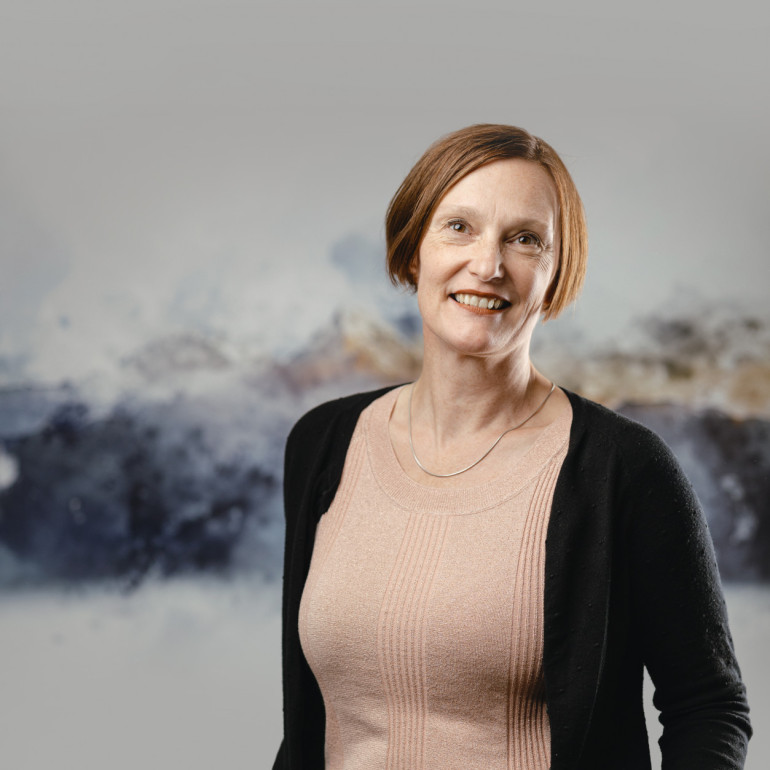
Authors
Tereza Fischer
Fiduciary with federal certificate of competence
Trewitax Zurich in Val Poschiavo
"A spasso": be on the road and have fun
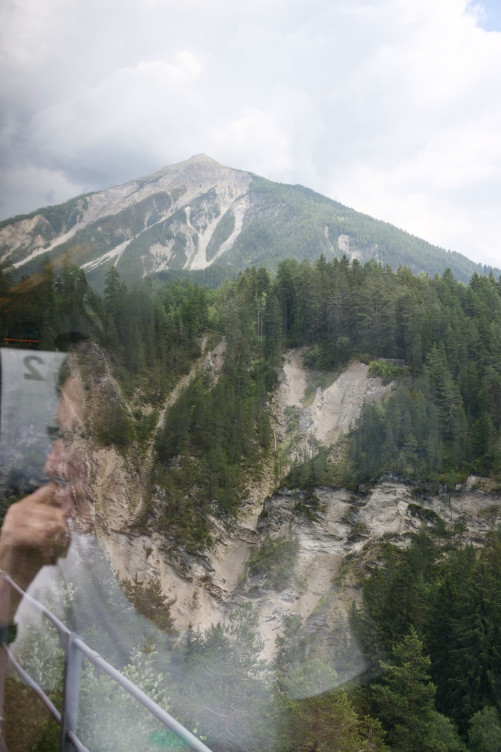
Panorama-Blick aus dem Bernina-Express
Switzerland is a small country. Its extension from north to south is just 220 km and from east to west 348 km. And yet, trips can be made within Switzerland's borders, with destinations almost six hours away from Zurich by train. This year, the annual hiking weekend of Trewitax Zurich took us to a remote corner of the canton of Graubünden: the Puschlav - or in Italian Val Poschiavoa.
in erstes Highlight des dreitägigen Ausflugs war die Reise selbst. In Chur stiegen wir in den Bernina Express, der mit seinen Panoramawagons Sicht auf lunare Berglandschaften und spektakuläre Bauten bietet. Die Strecke durch das Albulatal und über den Berninapass gehört seit 2008 zum UNESCO Welterbe. Der 65 Meter hohe Viadukt bei Filisur etwa führt über das Landwassertal direkt in einen Bergtunnel. Die Konstruktion der drei Hauptpfeiler der Eisenbahnbrücke war in den Jahren 1901/02 eine architektonische Meisterleistung. Sie wurde ohne Gerüst mit zwei Kranen erbaut.
Zu dieser touristischen Unternehmung auf der Fahrt mit dem Bernina Express gehört auch der Halt am Bahnhof Alp Grüm, wo man vor dem Palügletscher fürs Erinnerungsfoto posieren kann. Wir tun es den Touristen aus aller Welt gleich. Kaum hat sich der Zug nach diesem Stopp wieder in Bewegung gesetzt, eröffnet sich uns Aussicht auf die ganze Puschlav mit den Bergamasker Alpen und dem Lago di Poschiavo in der Ferne.
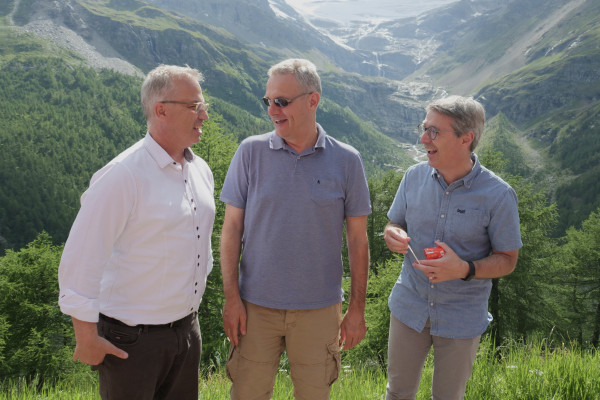
Trewitax-Zürich Partner Bruno Faoro, Roger Deutsch und Sandro Di Domenico
After a snaking ride downhill, we arrive in Poschiavo and are personally picked up by the director of the Hotel Croce Bianca and driven through the narrow streets to the former monastery. In the Vecchio Monastero the rooms are accessible via the cloister. They are spread out on two floors along wide, bright corridors. Each:r of us occupies a small, modestly furnished and wood-lined single room for two nights. The first night, however, reveals for some how brightly furnished the rooms, separated by simple wooden walls, are and how little private space the nuns had in their cells.
Confectioner's dreams
After checking into our room, a guided tour of Poschiavo awaits us. In its long history, the valley has served as a trade route between north and south. Already in the 16th century, the Bernina Pass was one of the main routes through which wine was sold to the north. But smugglers also brought cigarettes and coffee to Italy via this route until the 1970s.
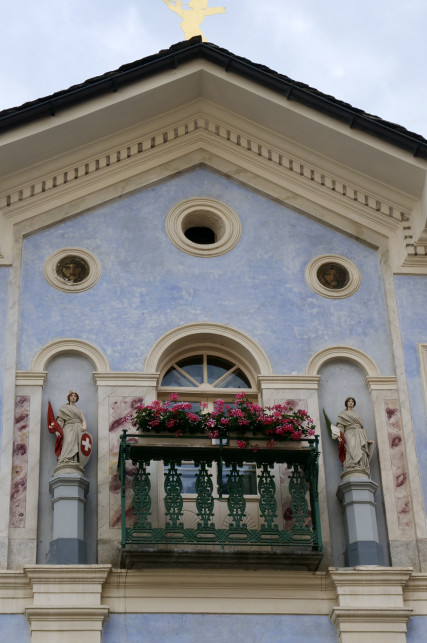
Echter Marmor? Nein, alles gemalt!
With our guide Patrizia we get to know the history of Poschiavo, especially through its architecture. We start from the busy main square, where the bikers enjoy their evening beer and which is lined with historic buildings, with churches and palazzi. On closer inspection, the ones with marble decorations turn out to be a skillful fake: all painted.
Contrasting with the many richly decorated palazzi is the oldest farmhouse in the city, Casa Tomé. Its origins date back to the Middle Ages. It has been largely preserved in its original state, as there have been no major changes either inside or out over the centuries.
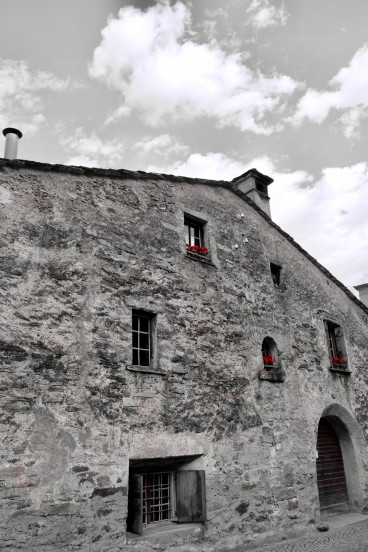
The oldest farmhouse in town: the Casa Tomé
On the outskirts of Poschiavo, the wealthy Poschiaver once again built their houses. A whole street is lined with stately villas from the second half of the 19th century and spacious gardens in front of them. Our intern has prepared a lecture for us on the confectioners of Poschiaver, which he gives on the spot. Especially in the 19th century, many had to emigrate to all corners of the world for economic reasons. In foreign countries they often worked as confectioners. Some of them became very wealthy. Especially in Spain and Portugal, legendary confectioneries and restaurants were run by families from Puschlav. They returned and proudly built themselves magnificent houses in Poschiavo. Planned by the Venetian architect Giovanni Sottovia, the villas surprise with their ingenious system of shutters that disappear into the outer wall when opened.
Patrizia, by the way, speaks Swiss German with a Puschlaver accent. Pus'ciavin is an unusual mixture of Italian and Rhaeto-Romanic; it belongs to the Alpine Lombard dialects and has archaic features. Even the Italian speakers among us had a hard time understanding everything. (more about the dialect on YouTube)
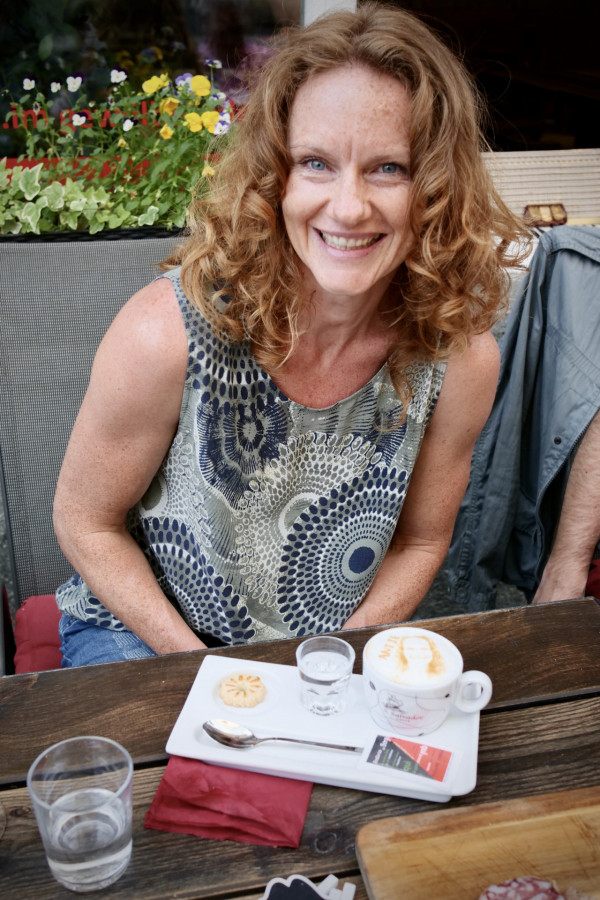
Antje Holzbecher with her Selficcino.
We continue the historical voyage of discovery through Poschiavo in the evening with a culinary adventure, where the local dialect still keeps us busy. Thus, the menu is full of riddles when reading the Puschlaver terms. What is chisci oil or pan ciuc con sciümüdin? Chisci oil is not a special oil, but a warm cheese wrapped in buckwheat. And the bread (pan) is soaked with red wine and served with strong cheese and mountain honey (Sciümüdin).
At the Hostaria del Borgo, some of us treat ourselves to a special coffee creation that is available in London but only here in Switzerland: the Selficcino. Thanks to cell phone photos and 3D printers, you can conjure up your own portrait on the milk foam.

Cold, but beautiful: the Lagh da Saoseo - probably one of the most beautiful Grisons mountain lakes
A real cool down in the Lagh da Saoseo
In Pus'ciavin, "being on the road" means "a spass'". And being on the road on a hike is always fun for us. On the second day we travel by bus to Sfazù, from where we hike to one of the most beautiful mountain lakes in Bünder, the Lagh da Saoseo. The path winds gently at the foot of the mountains, not too steeply, through sparse forests and over flower meadows, surrounded by an imposing mountain backdrop. After a few short unintentional detours and about three hours, the view of the crystal-clear, green-blue lake, which lies at 1985 m.a.s.l., finally opens up before us. After the hike, we are not only hungry, but also want to cool off in the lake. Diving in, however, is like a test of courage, as the water temperature does not reach more than 10°C. But the cool blue is so tempting that many of us venture into the water for a few minutes.
Since we are not too out of breath, we can talk while we walk and get to know the two new staff members better and take photos of the beautiful natural scenery again and again. At the end we are rewarded with a sour cider - a must when hiking.
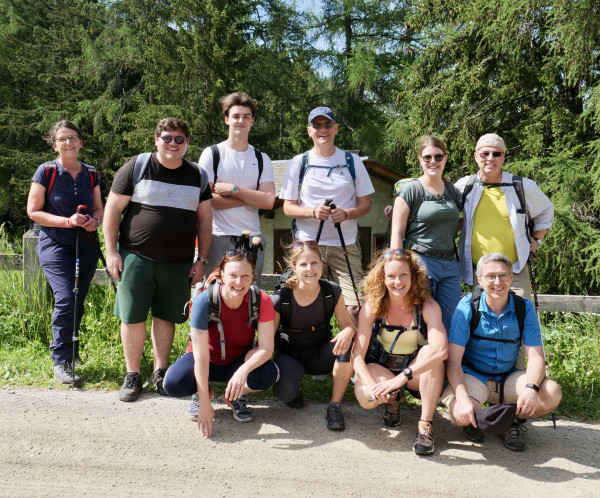
In a good mood until the end of the two-day tour: the Trewitax team from Zurich
Between sibyls
After the sporting activity, the crowning finale of our trip is the dinner in the Sibyl Hall of the Hotel Albririci à la Poste. The building is located on the main square. It was built in 1682 as Palazzo Massella and opened in 1848 as the first hotel in Valposchiavo. The magnificent wood-lined hall takes its name from the series of paintings depicting the twelve Sibyls. They appear here not only as the prophetesses of the Christian message of salvation, but are associated with a biblical scene depicted in the background. What is announced for us in this room and I venture here as a prophecy: This has not been the last instructive, fun and enjoyable hiking trip of Trewitax Zurich.
